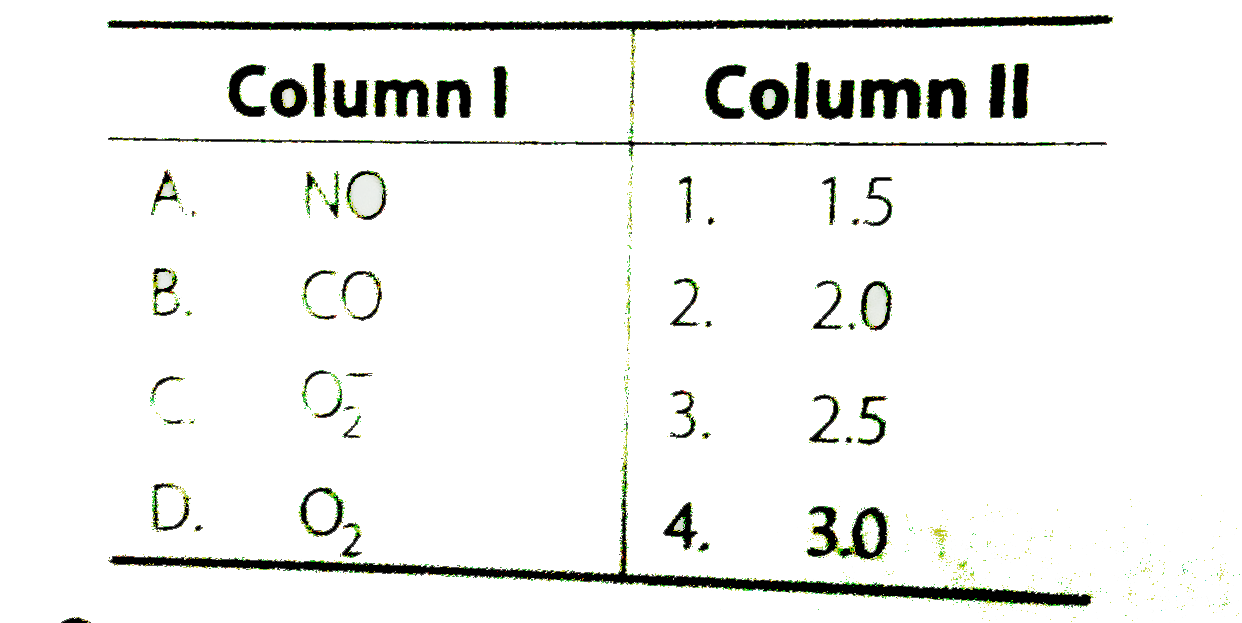Match the species in Column I with the geometry/shape in Column II.

Video Solution
Text Solution
The correct Answer is:(i)-(e),(ii)-(a),(iii)-(b),(iv)-(c)
pyramidal. Linear, Angulaer, Tetrahedral.
|
Updated on:21/07/2023
Topper's Solved these Questions
- BOOK - PRADEEPCHAPTER - CHEMICAL BONDING AND MOLECULAR STRUCTUREEXERCISE - NCERT EXAMPLAR PROBLEMS (ASSERTION AND REASON TYPE QUESTIONS)3videos
CHEMICAL BONDING AND MOLECULAR STRUCTURE
- BOOK - PRADEEPCHAPTER - CHEMICAL BONDING AND MOLECULAR STRUCTUREEXERCISE - NCERT EXAMPLAR PROBLEMS (LONG ANSWER QUESTIONS)5videos
CHEMICAL BONDING AND MOLECULAR STRUCTURE
- BOOK - PRADEEPCHAPTER - CHEMICAL BONDING AND MOLECULAR STRUCTUREEXERCISE - NCERT EXAMPLAR PROBLEMS (SHORT ANSWER QUESTIONS)21videos
CHEMICAL BONDING AND MOLECULAR STRUCTURE
- BOOK - PRADEEPCHAPTER - APPENDIXEXERCISE - MODEL TEST PAPER <br> (Section C )9videos
APPENDIX
- BOOK - PRADEEPCHAPTER - CLASSIFICATION OF ELEMENTS AND PERIODICITY IN PROPERTIES EXERCISE - Competition Focus (Jee Main and Advanced / Medical Entrance ) ( Assertion - Reason Type Question ) (Type II)12videos
CLASSIFICATION OF ELEMENTS AND PERIODICITY IN PROPERTIES
Similar Questions
Knowledge Check
- Question 1 - Select One
Match the species given in Column I with the shape given in Column II and mark the correct option.
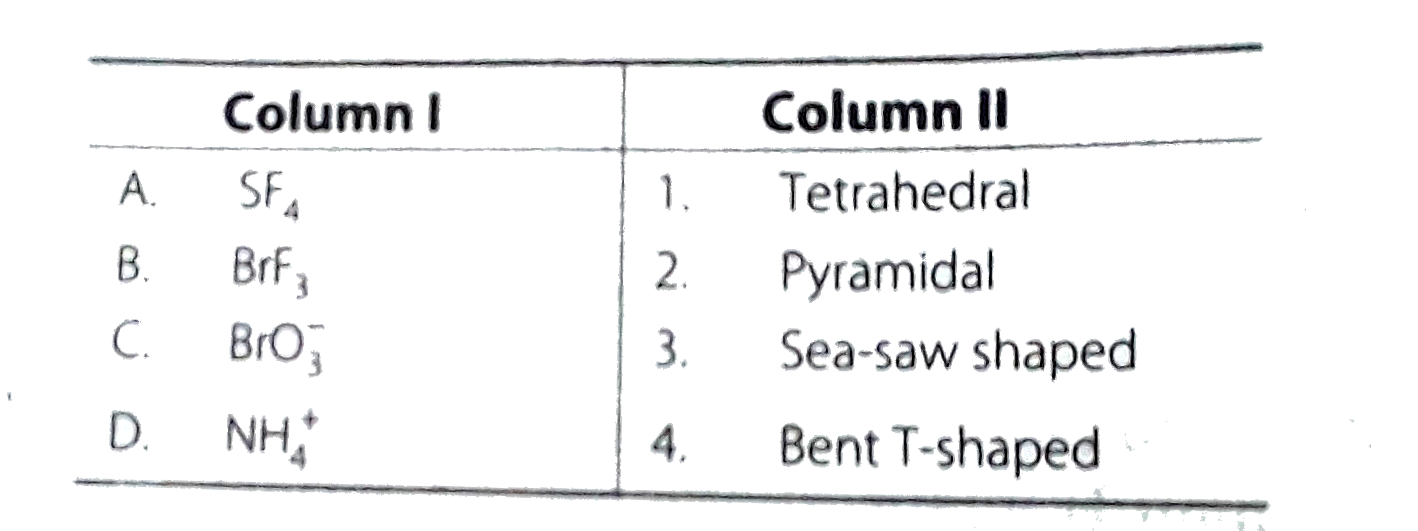 AABCD3214BABCD3421CABCD1234DABCD1432
AABCD3214BABCD3421CABCD1234DABCD1432 - Question 2 - Select One
Match the species in Column I with the bond order in Column II.
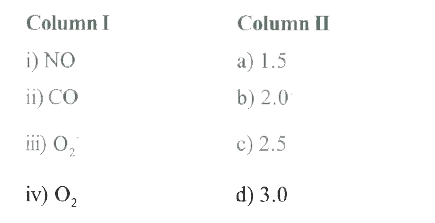 Ai-c,ii-d,iii-a,iv-bBi-a,ii-b,iii-c,iv-dCi-a,ii-b,iii-d,iv-cDi-a,ii-c,iii-e,iv-d
Ai-c,ii-d,iii-a,iv-bBi-a,ii-b,iii-c,iv-dCi-a,ii-b,iii-d,iv-cDi-a,ii-c,iii-e,iv-d - Question 3 - Select One
Match the species given in Column I with the shape given in Column II and mark the correct option.
 AA(3)B(2)C(1)D(4)BA(3)B(4)C(2)D(1)CA(1)B(2)C(3)D(4)DA(1)B(4)C(3)D(2)
AA(3)B(2)C(1)D(4)BA(3)B(4)C(2)D(1)CA(1)B(2)C(3)D(4)DA(1)B(4)C(3)D(2)
Match the molecule in Column I with the shape in Column II
 View Solution
View SolutionMatch the species in Column I with bond order in Column II.
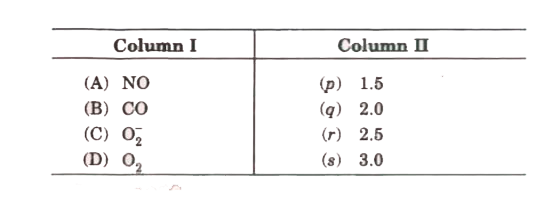 View Solution
View SolutionMatch the species given in column I with prperties given in Column II.
 View Solution
View SolutionMatch the species given column I with prooperties given in column II
 View Solution
View SolutionMatch the species in Column I with the type of hybrid orbitals in Column II.
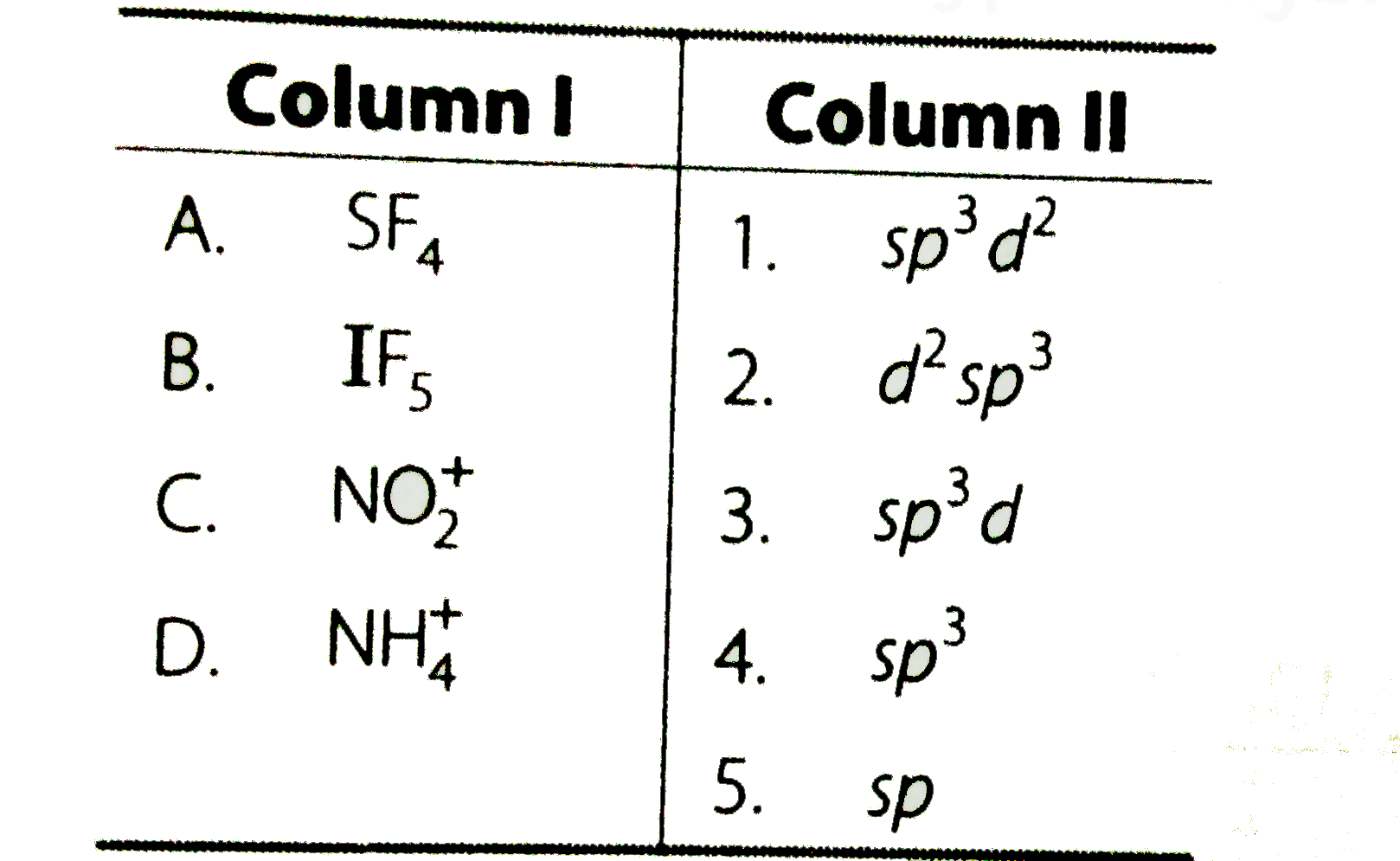 View Solution
View Solution



